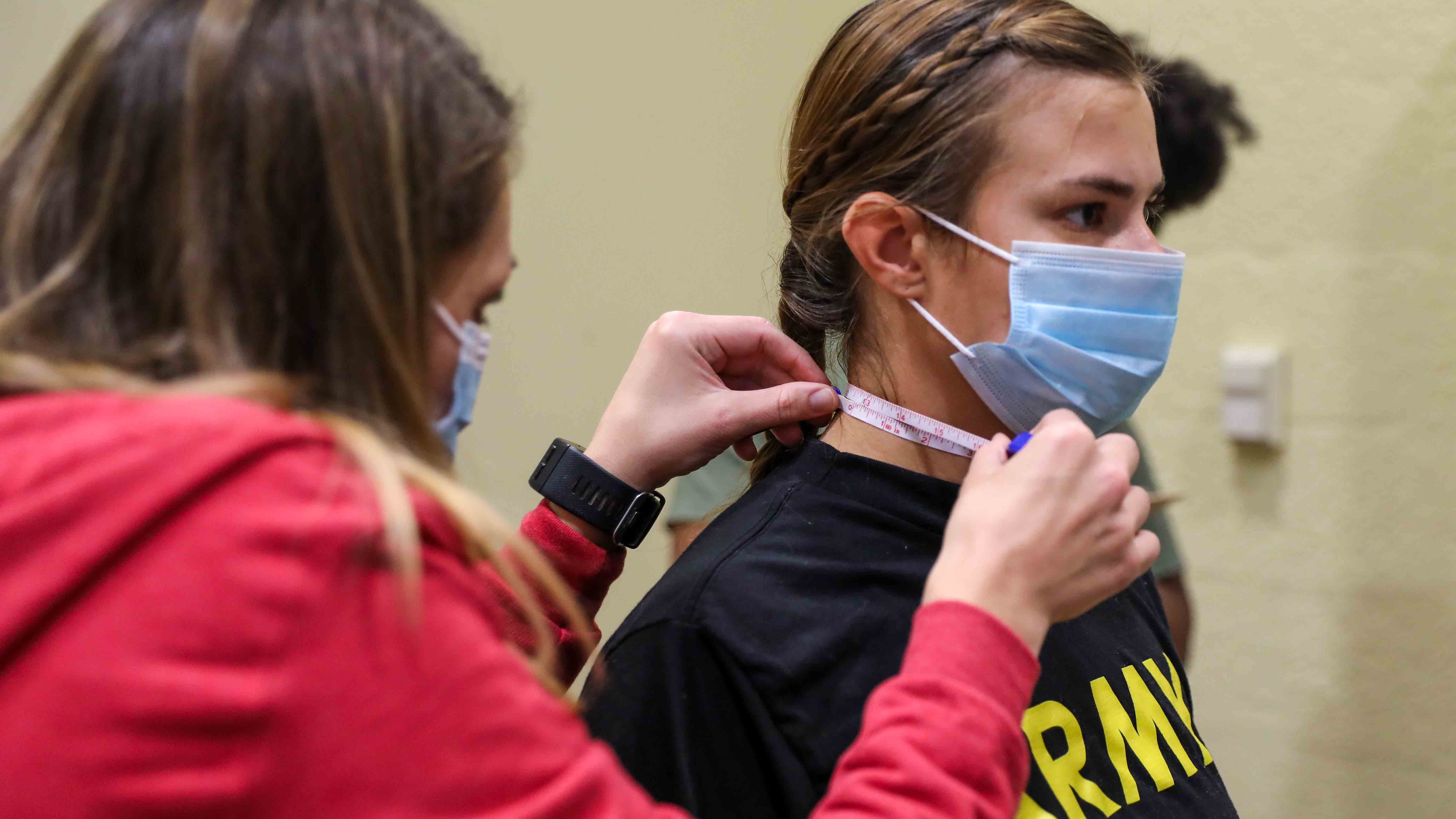Proposed Changes to Army Tape Test Being Reviewed
Proposed Changes to Army Tape Test Being Reviewed

Army leaders are reviewing the findings of a newly completed body composition study, and changes in how soldiers are measured for body fat could soon become policy, Sgt. Maj. of the Army Michael Grinston said.
For decades, the Army has determined soldiers’ body fat with a tape test that measures a man’s neck and abdomen or a woman’s neck, waist and hips. There will be no change in the percentage of body fat allowed in the Army’s current height and weight tables, but under Grinston’s proposed changes, soldiers would be measured with a tape around the waist only.
An important part of that proposal allows soldiers who wish to contest the outcome of a tape test to seek a “second opinion,” Grinston said, and be measured electronically.
Options include a bioelectrical impedance analysis that estimates body composition using a low-level electrical current that travels throughout the body; a 3D body surface scan that measures body length and circumference; and dual-energy X-ray absorptiometry, known as DEXA, which is a scanning machine that measures fat, muscle and bone.
This element of the proposed change is under review by top Army leaders and, if approved, a directive could be signed by the Army secretary in “the next couple of months,” Grinston said.
Any changes will take time to implement, Grinston said, because the Army has to buy and distribute 600 impedance machines, the most cost-effective of the three electronic options. The Army National Guard and Army Reserve would receive more of the machines, he said, because they “have more posts, camps and stations,” and many of the alternate body measuring machines are already available on active-duty posts.
Coming sooner, he said, will be an exemption from being measured for body fat for soldiers who score 540 or higher on the Army Combat Fitness Test, with at least 80 points in each of the six events. The highest achievable score is 600.
Grinston said he expects that directive to be signed and published within “a couple of weeks” and be in effect immediately but not retroactively.
“We knew there was a population of personnel who were inaccurately flagged, which could lead to a separation which, at the end of the day, that’s talent that we weren’t retaining,” said Sgt. Maj. Christopher Stevens, senior enlisted adviser to the deputy Army chief of staff for personnel, G-1. “We were not doing our job at the G-1 from a policy standpoint to ensure that we were building personnel readiness.”
Calling this new body composition study the “most comprehensive study he’s seen” during his more than 35 years in the Army, Grinston said the last such study was conducted in 2001. This convinced him that it was time to review the methodology being used and consider the impact it has on a new generation of soldiers who represent a broader demographic.
The study was a “collaborative project” between the Army Research Institute of Environmental Medicine and the Army’s Center for Initial Military Training, said Holly McClung, a nutritional physiologist and one of the lead scientists on the study.
Data was collected over nine months in 2021 and 2022 at Fort Bragg, North Carolina, Fort Lee, Virginia, and the U.S Army Garrison at West Point, New York. The findings were validated in December 2022 with soldiers at Fort Stewart, Georgia.
Key takeaways include the finding that soldiers who score highest on the Army Combat Fitness Test tend to have lower body fat and be in better overall physical health, while those with a higher body fat percentage are prone to musculoskeletal injury.
“That’s important information for Army senior leaders. It’s duty time that is lost, so it kind of helps solidify the body composition requirements,” said Kathryn Taylor, director of the Soldier Performance, Health and Readiness Database at the Army Research Institute of Environmental Medicine.
The full study will be released after any Army policy changes are made and the study undergoes a full scientific peer review, Grinston said.

